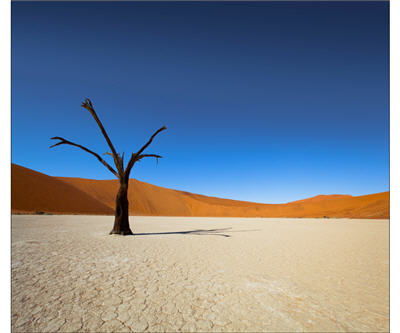
The Namibian reports 500 workers at Rio Tinto’s Rossing uranium mine in Namibia downed tools on Tuesday in a dispute over production incentives. The news comes in the wake of a senior Rio Tinto executive telling Dow Jones on Monday that the mine – which accounts for over 5% of world production of uranium oxide – is losing money at the current price of under $55 per pound of U3O8.
Rossing which lies partly inside the Namib-Naukluft Park (pictured) has produced uranium since 1976. Rio Tinto owns 70% while the Iranian government with 15% is the second largest shareholder.
The Namibian reports strikers are demanding a lump sum payment of N$30,000 (US$4,400) per employee as a production incentive this year. Last year workers received a bonus of N$11 000 but are fuming because the company’s managers have allegedly already received N$50 000 each in incentive this year.
Dow Jones spoke to Andy Lloyd, chief development officer for Rio Tinto’s uranium unit on Monday who said several uranium projects planned globally are stalled because the spot price isn’t high enough to justify development, but declined to to say what uranium price Rio needs for Rossing to be profitable.
Resource Investing News reported on Tuesday the spot price for uranium has climbed 4% to reach $53.75 per pound, an increase of $2.00 from the previous week’s uranium spot price. The most widely traded compound U308 traded above $70/pound before the nuclear crisis in Japan.
MINING.com reported in May on Namibia’s other uranium producer Langer Heinrich saying supply and demand imbalances in the uranium market will only widen in future as more plants, such as the 25 under construction in China, come on stream. Langer Heinrich and Rossing together supply 8% of world uranium demand.
Rossing started production in 1976 and is the world’s third largest producer of uranium oxide. The mine is 70% percent owned by Rio Tinto while the Namibian government owns a 3% stake. The government of Iran through its Foreign Investment Company owns 15%, a shareholding that dates back to the rule of the Shah of Iran in the late 1970s. The Industrial Development Corporation (IDC) of South Africa owns 10%, while local individual shareholders own a combined 3% shareholding.
The mine is located close to the town of Arandis, 70km inland from the coastal town of Swakopmund in Namibia’s Erongo Region. Walvis Bay, Namibia’s only deepwater harbour, is located 30km south of Swakopmund. Parts of the mine properties lie inside the Namib Naukluft Park. The picture is of Sossusvlei in the Namib Desert, a pan that may receive inflows once or twice per decade.